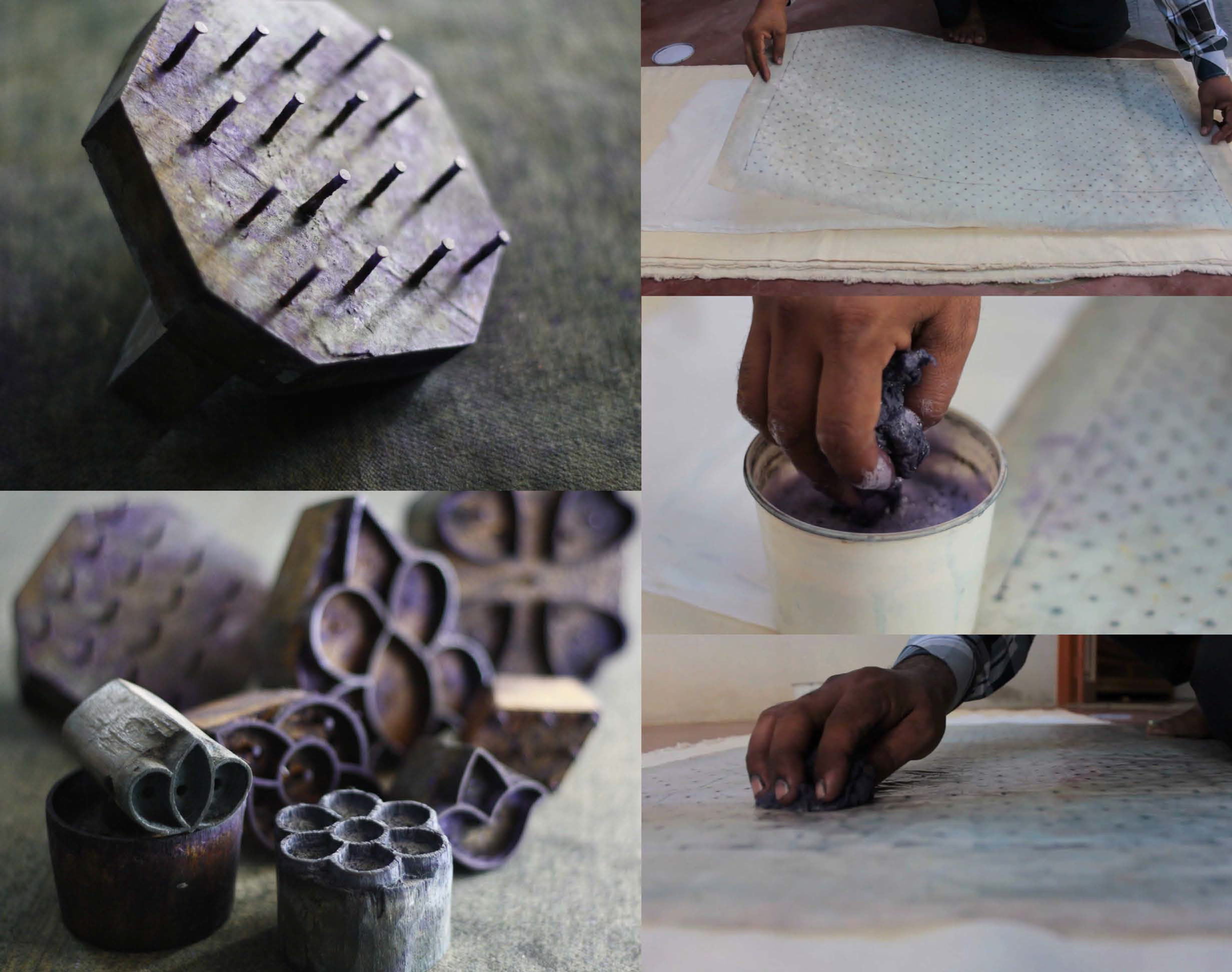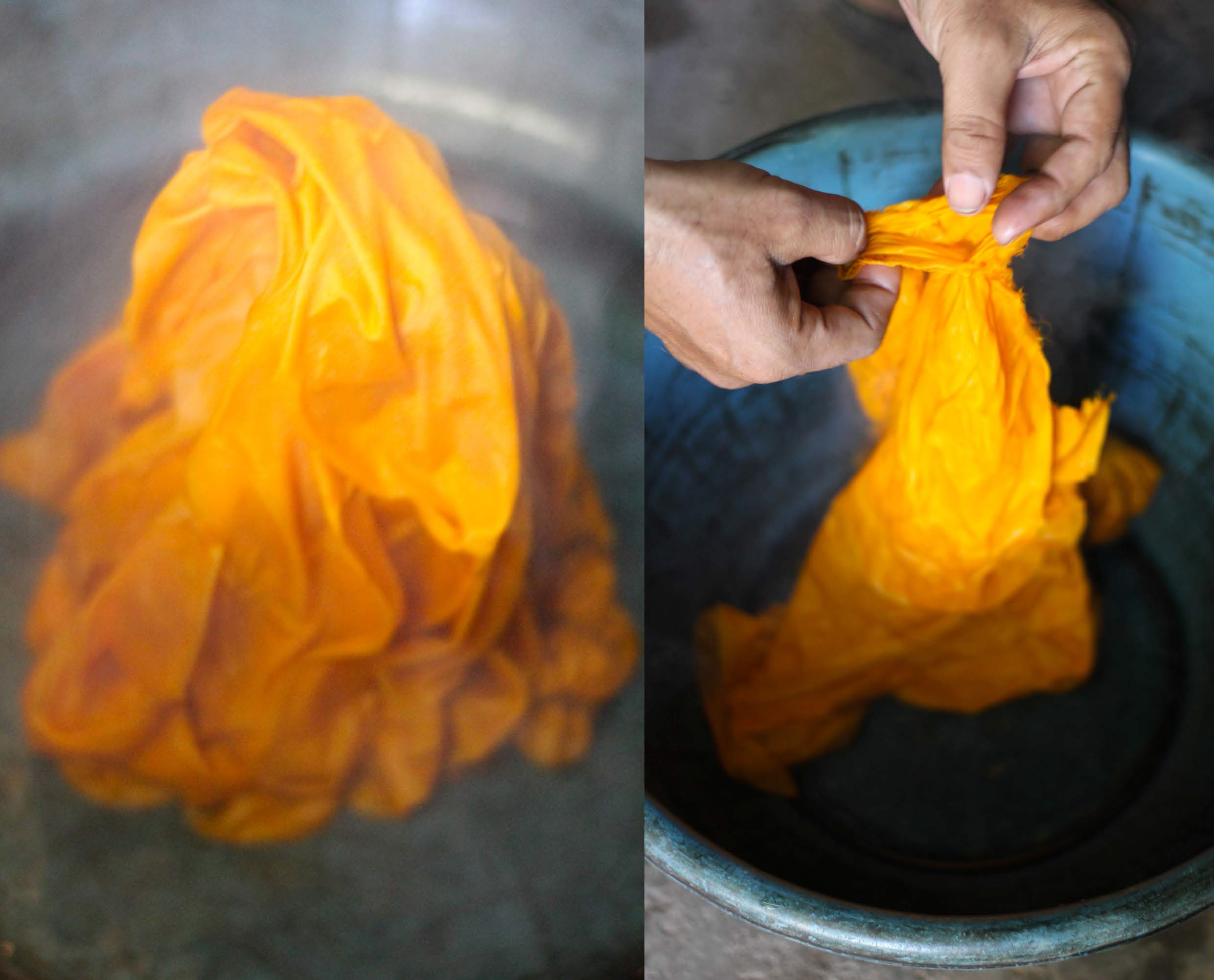How is Bandhani made?
What is resist dyeing?
Resist Dyeing is a technique where methods are used to "resist" or prevent the dye from reaching a portion of the cloth, thereby creating a pattern and ground. The most common forms use wax, some type of paste, a mechanical resist such as tying or stitching, or a chemical agent that repels the dye when dipped in the cloth. Tie-dye and batik are the most well known examples of resist, and ikat and shibori are other popular techniques. Resist dyeing has been widely used across Eurasia and Africa, dating back to a simple block patterned child's tunic found in Egypt from the fourth century. The cloth was soaked in wax, then scratched with a sharp stylus, dyed with a mixture of blood and ashes, and finally washed in hot water.
What is tie dye?
Tie-dye is a process of tying a piece of fabric before it is dipped in dye in order to create patterns on the fabric. The tying is usually done with string, and the earliest surviving examples of tiedye are from 500 to 81 0 AD in Peru. Their designs include small circles and lines with bright colours such as red, yellow, blue, and green. In addition to bandhani, different forms of tie-dye are practiced in many parts of the world including shibori in Japan, plangi and ikat in Indonesia and similar techniques in West Africa. Tie-dye gained popularity in the United States of America in the 20th century after it became associated with the hippie movement.
What is bandhani made on?
The type of textile used for a bandhani garment influences the quality of the ties, intricacy of the design, and cost of the item. The finer materials enable more intricate designs, and are therefore higher in cost. The most common fabrics used for bandhani are: cotton, silk, wool, and malmal. Traditionally, the material used was dependent on the locally available materials and user communities, such as woolen shawls for the Rabari herding communities and cotton gharcholas for Hindu women. Often, these garments would be further embellished with embroidery, sequins, gems, and zari work or even woven with gold thread prior to being tied. Today, materials are being sourced from all over India, especially different varieties of silk, such as Benarasi and gajji.
How is it dyed?
Dyeing is the art of adding colour to a fabric by immersing it into a hot water and dye solution. Nature has provided a wide variety of plants, trees, flowers, leaves and fruits that have been used to create dyes since ancient times, and the practice still continues today. Originally, bandhani was all coloured using natural dyes, but synthetic dyes have entered the market and are commonly used today. These dyes are permanent, quick-setting, and easier to use than natural dyes, but artisans still use and experiment with natural dyes. The amount of time it takes for fabrics to absorb color and maintain color fastness is dependent on the type of dye.
Some examples of natural dye sources are: Magista wood (red), Turmeric roots (yellow), pomegranate peel (dark yellow), Sapan wood (pink), scrap metal (black), Indigo leaves (blue), Onion skins (orange), Mehendi (gold).
“The weaving for my fabrics is mainly done elsewhere, such as Benares. We tell the weavers what design we want and they send us a white fabric with matching borders. Then, we print the bandhani design on it and get it tied in Kachchh.”
-
Mohamed Alimohamed Khatri, Bhuj
Process
Step 1: Preparation of the fabric
The plain white fabric is purchased, cut to size, and checked for impurities before it is washed for improved dye absorption. The fabric is then folded into two or more layers and lightly stitched along the edges to keep the layers together for printing.
Step 2: Printing
The folded fabric is laid flat on a table for the design printing. Traditionally, wooden blocks dipped in "geru" (red oxide mixed with water) were used to print the design, but now, plastic farma paper is used. Motifs are first hand drawn on the paper, pricked with a needle so the design transfers in small dots, and when the paper is placed on the fabric, a mixture of dye and water is rubbed over the plastic so the design transfers directly onto the cloth.
Step 3: Tying
Next, the cloth is given to the "bandhanara" or tying artist, who raises and pinches the fabric in the marked designs using a pointed small fingernail or metal ring with a pointed tip. She then ties the fabric into tight knots using a continuous cotton thread that fully covers the raised portion. The thread is usually run through a metal, ivory, plastic or millet stem bobbin so that it runs smoothly and evenly while tying. The thumb and forefinger of the right hand lead the thread while the left hand thumb presses the material together.
The tiers are typically women, and they sit on the floor of their house, fabric on their lap, and tie during their free time after the housework is completed. This skill is learned from a young age and is passed down through generations. The number of ties per cloth can range from a few to many thousands, and can take a few days to many months depending on the design and garment. Payment for this work is dependent on the type of fabric, and the size and number of "kadis" that have been tied. One kadi is equal to four dots, and highly skilled artisans could tie up to 2000 dots in one day while part time workers average 400-500 dots a day. There are two types of tying: Sarkam, which is tying on the marked designs, and Bharti, which is filling in the empty spaces. The thread used for tying depends on the material as the finer the fabric, the smaller the ties and count of the thread.
Step 4: Dyeing
Once the tying is completed, the cloth is washed in a hot water solution to clean the cloth. For dyeing, the fabric is typically immersed in the dye solution for 5-7 minutes but it varies on the type of dye, colours used, and preferred darkness of the fabric. The dyer always starts with the lightest colour (usually yellow), sends the fabric to be tied again if needed, and repeats the process until all the desired colours have been added. The tied, reserve areas retain the original ground colour(s).
Step 5: Washing
After dyeing, the cloth is washed gently with soft water to remove any extra dye or impurities.
Step 6: Drying & Hitching
The cloth is then left to dry for several hours before it is ready to be sold. The tied cloth is stored without removing the ties. The tied fabric is stored without removing the ties so that the customer can be sure of its authenticity and can watch the design unfold for the first time. This process is known as "hitching'' and is done when two ends of the material are pulled crosswise tightly, loosening and opening the ties to reveal the colours and patterns in the fabric.







